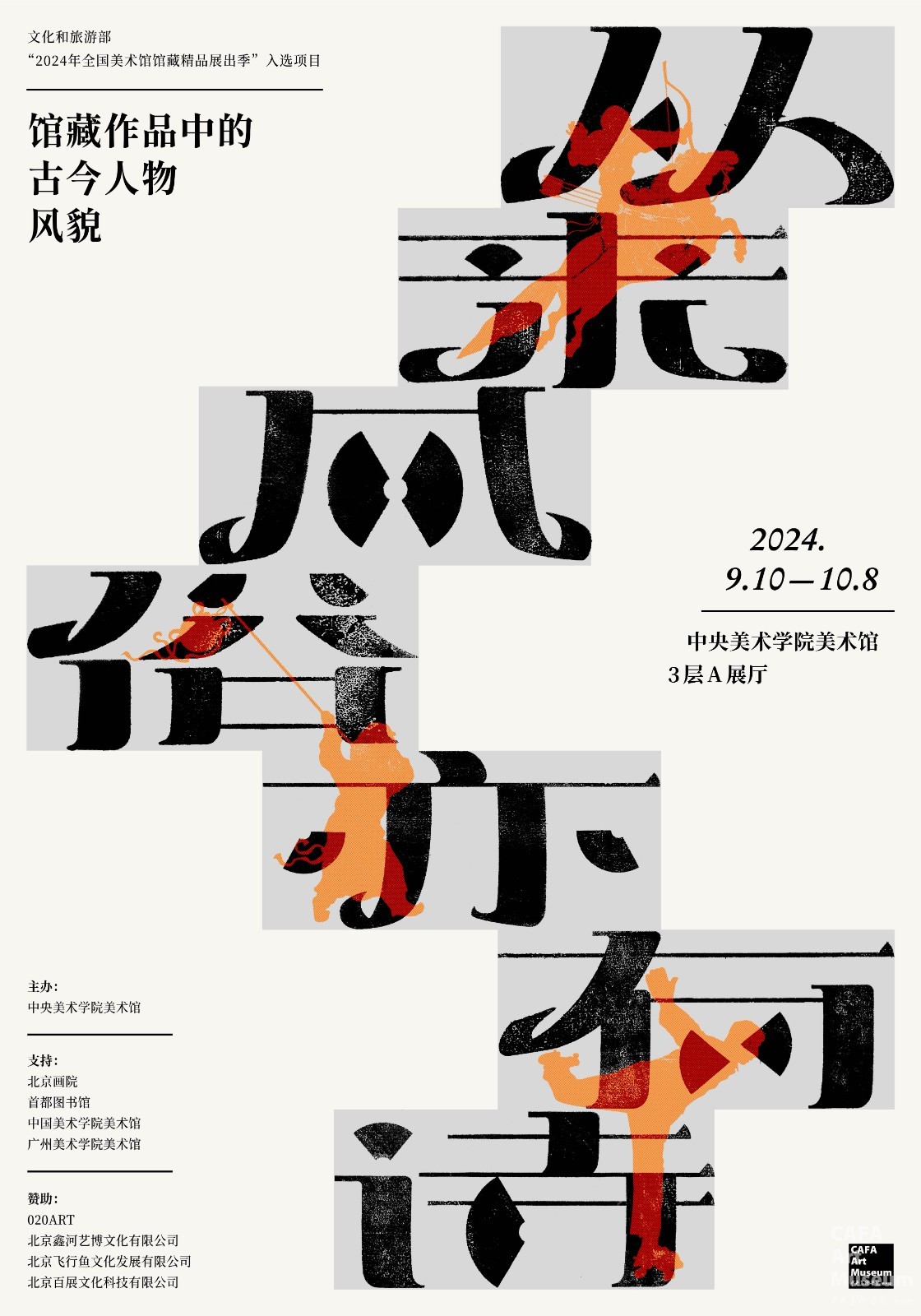
"There Have Always Been Poems About Customs - Ancient and Modern Characters in the Collections"
Exhibition Research Workshop
Public Lecture Series

Opening Keynote Lecture:There Have Always Been Poems About Customs
Speaker: Huang Xiaofeng(Dean of the School of Humanities at the Central Academy of Fine Arts, Academic Advisor of the Exhibition)
Moderator: Jin Jun (Director of the Art Museum of the Central Academy of Fine Arts)
On September 10th, 2024, the exhibition "Customs and Poetry: Ancient and Modern Characters in the Collection" opened on schedule at the Art Museum of the Central Academy of Fine Arts (CAFA). After the opening ceremony, Prof. Huang Xiaofeng, Dean of the School of Humanities of the Central Academy of Fine Arts and academic advisor of the exhibition, gave a special opening lecture. The lecture discussed the establishment and development of "custom painting" as an important concept in Chinese art history and its art historical connotation, and looked at the concept of "custom painting" from a modern perspective and an ancient perspective respectively. By reviewing the process of the introduction of "custom painting" as a concept in art history, he will discuss the influence of custom painting in Chinese art history and analyze its manifestation and transformation of forms in different times from the perspective of art history.
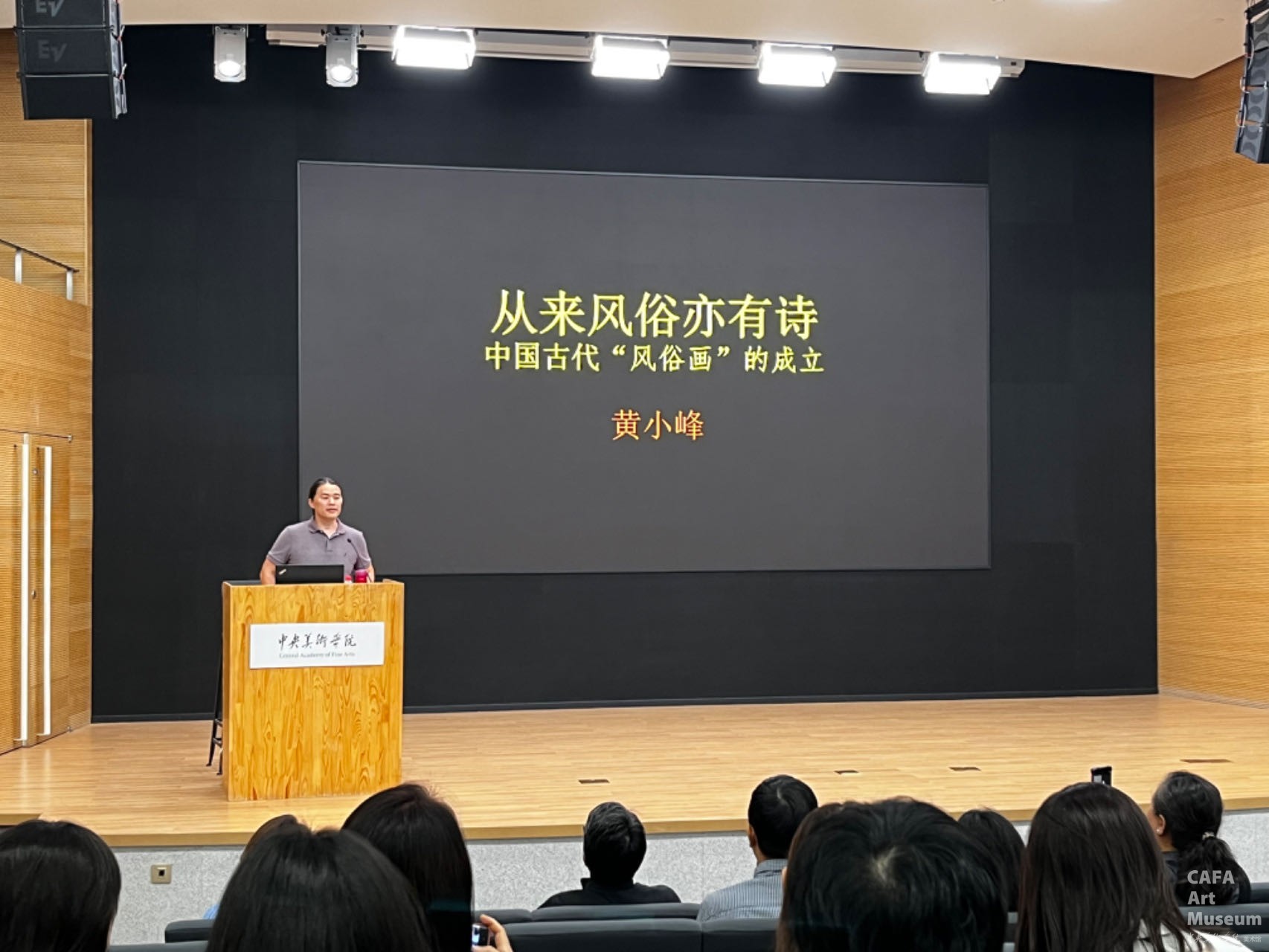
主讲人 黄小峰
黄小峰教授首先从现代视角切入对“风俗画”概念的讨论。“风俗画”一词来源于日语,最早出现在1889年创刊的《风俗画报》中,随着日本对风俗绘画研究的深入,风俗画在亚洲艺术研究中逐渐占有一席之地。日本的“浮世绘”是风俗画发展的一个典型代表,呈现了当时社会生活的丰富场景。随着风俗画研究逐渐受到重视,这一概念被引入中国,成为美术学的一个重要分支。从19世纪末到20世纪初,西方学者如英国人威廉·安德森和美国人费诺诺萨等人,先后使用“Genre painting”(风俗画)来指称日本的浮世绘,并将其描述为“大众派”或“风俗画派”。而在中国,民国初期学者将其用于古代绘画作品的研究中,试图通过对日常生活、社会风貌的描绘来挖掘中国古代风俗画的艺术价值和社会功能。
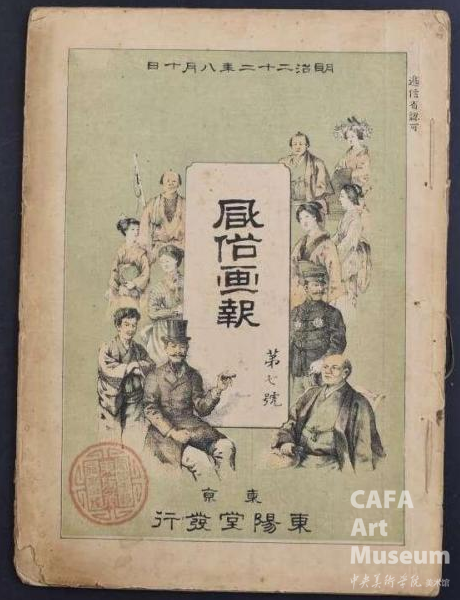
东京东阳堂 《风俗画报》第七号
其次,从古代视角来看,黄小峰教授分析了“风俗图”在中国绘画史中作为独立绘画类型的发展过程。“风俗图”在中国绘画中成为一个明确的绘画类型,最早可追溯至初唐时期,并在宋代正式得到确立。在其后的元、明、清等朝代得到发展和丰富。唐代画家范长寿《风俗图》标志着风俗画类型的成立,范长寿擅长描绘田家景象和人物活动,其作品风格具有浓厚的生活气息。唐代文献所记载的东晋画家史道硕《田家十月图》、隋朝画家董伯仁《农家田舍图》、等作品也表现了当时的农耕社会景象,展现了古代风俗图的早期发展阶段。
宋代的风俗画更为精致和成熟,随着城市文化的发展,宋代艺术家们创作了大量描绘城市生活和民俗活动的作品。北宋时期,郭若虚在其《图画见闻志》中提到风俗画的发展,认为画家毛惠远的《剡中溪谷村墟图》、陶景真的《永嘉屋邑图》以及杨契丹的《长安车马人物图》均是风俗画中的佳作,这些作品反映了宋代社会日常生活的多样性。宋徽宗时代的《清明上河图》更是风俗画的巅峰之作,这幅画不仅描绘了北宋汴京的繁华市景,还包含了丰富的民生、商贸及社会阶层的细节,被誉为“绘画史上最重要的作品之一”,展示了风俗画在宋代的成就。
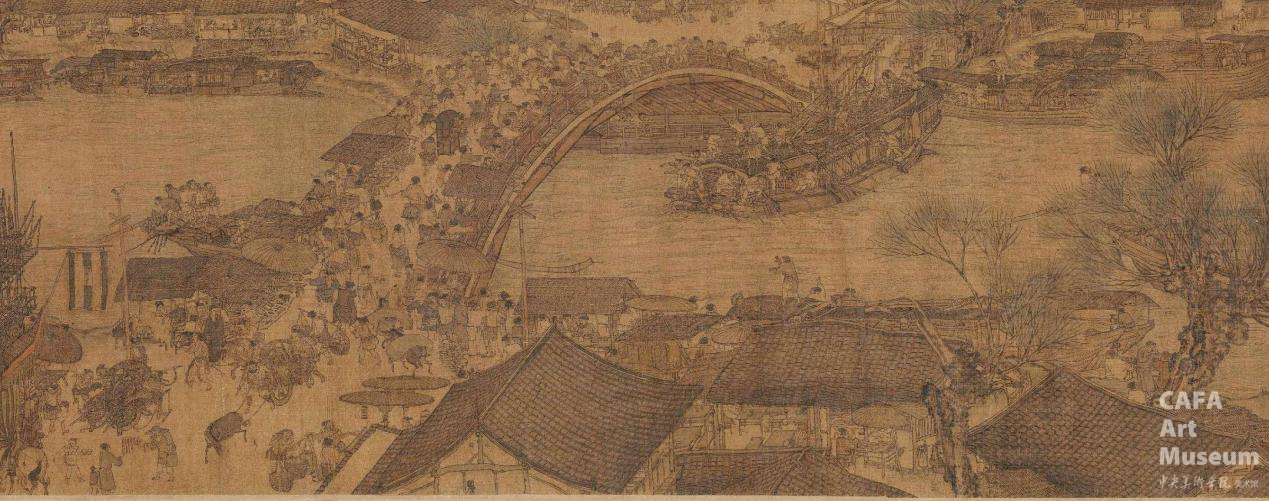
张择端 《清明上河图》(局部)
明清时期,风俗画的题材和表现形式进一步丰富。仇英的作品《四季仕女图》以及《上林图》都以铺陈细致的方式描绘了明代士女的日常生活和社会活动,作品中涉及的楼观、旗辇、车器等元素皆精巧而华丽。与此同时,清代风俗画受《清明上河图》的影响明显,许多画家效仿创作了表现市井生活、地方风俗的作品,例如徐扬的《姑苏繁华图》,细致入微地描绘了苏州的繁荣景象。此外,清代的《太平欢乐图》也反映了当时商贸活动的盛况,这些作品都表明风俗画在清代社会中的流行与艺术性。
黄小峰教授还强调了中国风俗画与西方风俗画的不同之处。与西方强调人物个性与社会讽刺的风俗画不同,中国古代风俗画主要关注社会风貌的展示和生活场景的再现,更注重营造氛围和传达礼俗。在中国风俗画中,人物往往被视作集体活动的组成部分,画家通过细腻的笔触、结构性的构图来呈现市井百态,传达传统文化与生活情趣。例如,宋代的《江山放牧图》、《田畯醉归图》以及《村童闹学图》等作品展现了农业社会的日常生活与乡村童趣,旨在记录真实生活、传达文化意涵。
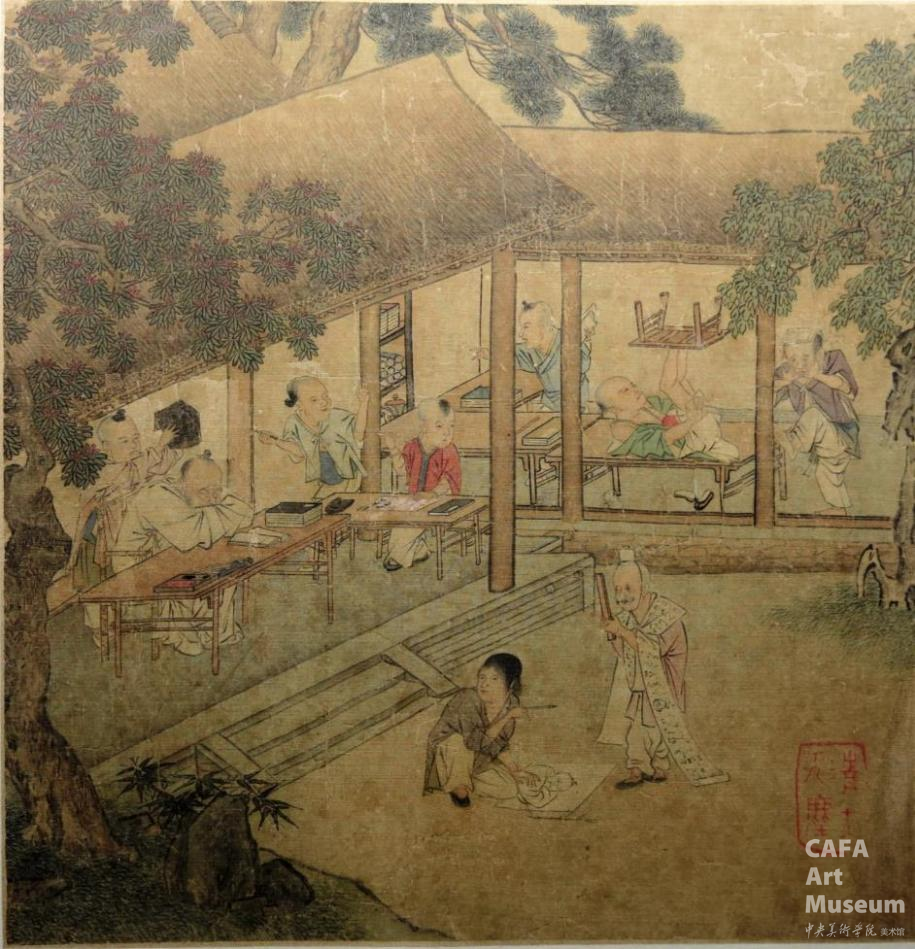
仇英《摹宋人村童闹学图》
1950年代后,中国学者对风俗画进行了进一步的整理和研究。例如,胡蛮等学者认为,风俗画不仅具有艺术性,也具有重要的历史价值,是了解古代社会文化的重要依据。黄小峰教授提到,1950年代《清明上河图》被故宫博物院收藏,并被广泛研究,进一步确立了风俗画在中国艺术史中的地位。清明上河图展示了一个多层次、多角度的市井生活画卷,不仅是风俗画的典范,也为后世研究提供了丰富的社会史料。
最后,黄小峰教授总结,风俗画作为一种描绘日常生活和民俗活动的艺术形式,不仅展现了中国古代社会的多样性和丰富性,也体现了不同历史时期的审美趣味和社会意识。风俗画从唐代萌芽到宋代的繁荣,再到明清的传承与创新,始终与社会生活紧密相连,为后人提供了观察和研究古代生活的窗口。因此,风俗画在中国美术史上具有独特而重要的地位,是不可忽视的艺术类型。
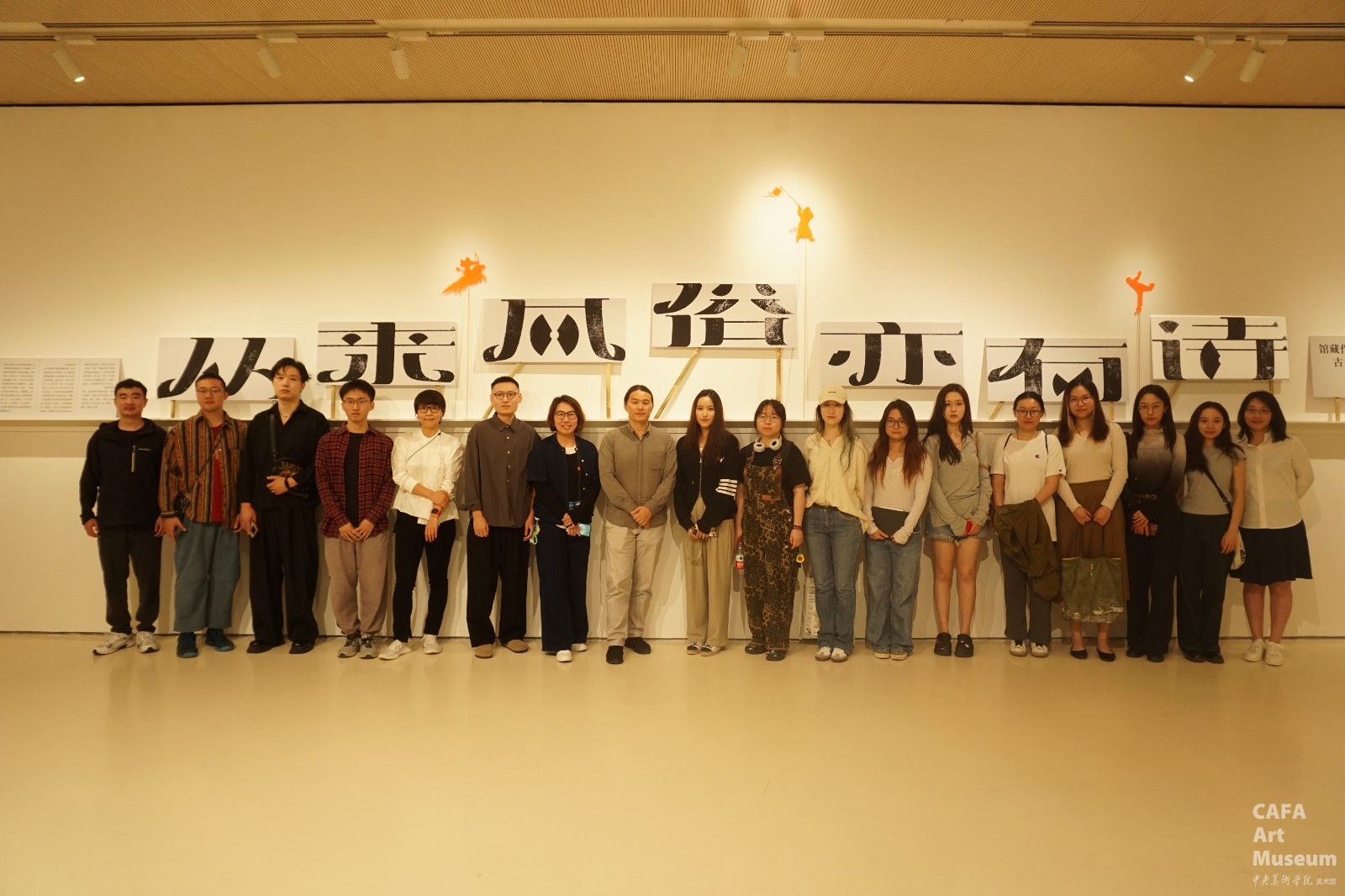
黄小峰教授与展览研究工作坊学员合影
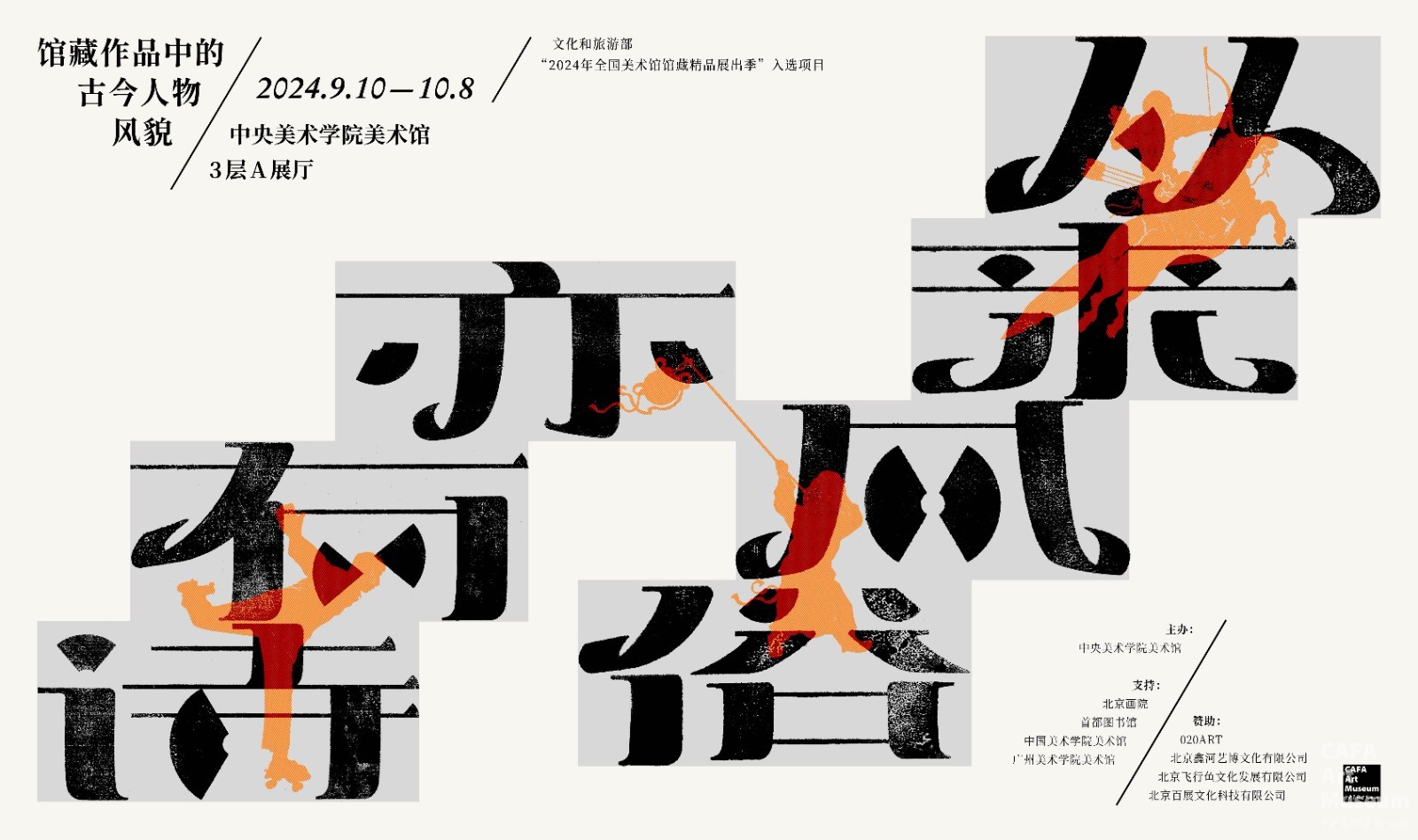
主编 / 何一沙
责编 / 杜隐珠
综述整理 / 陈冠石
CAFA Art Museum Publication Authorization Agreement
I fully agree to CAFA Art Museum (CAFAM) submitting to CAFA for publication the images, pictures, texts, writings, and event products (such as works created during participation in workshops) related to me from my participation in public events (including museum member events) organized by the CAFA Art Museum Public Education Department. CAFA can publish these materials by electronic, web, or other digital means, and I hereby agree to be included in the China Knowledge Resource Bank, the CAFA Database, the CAFA Art Museum Database, and related data, documentation, and filing institutions and platforms. Regarding their use in CAFA and dissemination on the internet, I agree to make use of these rights according to the stated Rules.
CAFA Art Museum Event Safety Disclaimer
Article I
This event was organized on the principles of fairness, impartiality, and voluntary participation and withdrawal. Participants undertake all risk and liability for themselves. All events have risks, and participants must be aware of the risks related to their chosen event.
Article II
Event participants must abide by the laws and regulations of the People’s Republic of China, as well as moral and ethical norms. All participants must demonstrate good character, respect for others, friendship, and a willingness to help others.
Article III
Event participants should be adults (people 18 years or older with full civil legal capacity). Underage persons must be accompanied by an adult.
Article IV
Event participants undertake all liability for their personal safety during the event, and event participants are encouraged to purchase personal safety insurance. Should an accident occur during an event, persons not involved in the accident and the museum do not undertake any liability for the accident, but both have the obligation to provide assistance. Event participants should actively organize and implement rescue efforts, but do not undertake any legal or economic liability for the accident itself. The museum does not undertake civil or joint liability for the personal safety of event participants.
Article V
During the event, event participants should respect the order of the museum event and ensure the safety of the museum site, the artworks in displays, exhibitions, and collections, and the derived products. If an event causes any degree of loss or damage to the museum site, space, artworks, or derived products due to an individual, persons not involved in the accident and the museum do not undertake any liability for losses. The event participant must negotiate and provide compensation according to the relevant legal statutes and museum rules. The museum may sue for legal and financial liability.
Article VI
Event participants will participate in the event under the guidance of museum staff and event leaders or instructors and must correctly use the painting tools, materials, equipment, and/or facilities provided for the event. If a participant causes injury or harm to him/herself or others while using the painting tools, materials, equipment, and/or facilities, or causes the damage or destruction of the tools, materials, equipment, and/or facilities, the event participant must undertake all related liability and provide compensation for the financial losses. Persons not involved in the accident and the museum do not undertake any liability for personal accidents.
CAFA Art Museum Portraiture Rights Licensing Agreement
According to The Advertising Law of the People’s Republic of China, The General Principles of the Civil Law of the People’s Republic of China, and The Provisional Opinions of the Supreme People’s Court on Some Issues Related to the Full Implementation of the General Principles of the Civil Law of the People’s Republic of China, and upon friendly negotiation, Party A and Party B have arrived at the following agreement regarding the use of works bearing Party A’s image in order to clarify the rights and obligations of the portrait licenser (Party A) and the user (Party B):
I. General Provisions
(1) Party A is the portraiture rights holder in this agreement. Party A voluntarily licenses its portraiture rights to Party B for the purposes stipulated in this agreement and permitted by law.
(2) Party B (CAFA Art Museum) is a specialized, international modern art museum. CAFA Art Museum keeps pace with the times, and works to create an open, free, and academic space and atmosphere for positive interaction with groups, corporations, institutions, artists, and visitors. With CAFA’s academic research as a foundation, the museum plans multi-disciplinary exhibitions, conferences, and public education events with participants from around the world, providing a platform for exchange, learning, and exhibition for CAFA’s students and instructors, artists from around the world, and the general public. As a public institution, the primary purposes of CAFA Art Museum’s public education events are academic and beneficial to society.
(3) Party B will photograph all CAFA Public Education Department events for Party A.
II. Content, Forms of Use, and Geographical Scope of Use
(1) Content. The content of images taken by Party B bearing Party A’s likeness include: ① CAFA Art Museum ② CAFA campus ③ All events planned or executed by the CAFAM Public Education Department.
(2) Forms of Use. For use in CAFA’s publications, products with CDs, and promotional materials.
(3) Geographical Scope of Use
The applicable geographic scope is global.
The media in which the portraiture may be used encompasses any media that does not infringe upon Party A’s portraiture rights (e.g., magazines and the internet).
III. Term of Portraiture Rights Use
Use in perpetuity.
IV. Licensing Fees
The fees for images bearing Party A’s likeness will be undertaken by Party B.
After completion, Party B does not need to pay any fees to Party A for images bearing Party A’s likeness.
Additional Terms
(1) All matters not discussed in this agreement shall be resolved through friendly negotiation between both parties. Both parties may then sign a supplementary agreement, provided it does not violate any laws or regulations.
(2) This agreement comes into effect on the date that it is signed (sealed) and the relevant boxes are selected by Party A and Party B.
(3) This agreement exists in paper and electronic forms. The paper form is made in duplicate, with Party A and Party B each retaining one copy with the same legal efficacy.
Event participants implicitly accept and undertake all the obligations stated in this agreement. Those who do not consent will be seen as abandoning the right to participate in this event. Before participating in this event, please speak to your family members to obtain their consent and inform them of this disclaimer. After participants sign/check the required box, participants and their families will be seen as having read and agreed to these terms.
I have carefully read and agree to the above provisions.
CAFA Art Museum Publication Authorization Agreement
I fully agree to CAFA Art Museum (CAFAM) submitting to CAFA for publication the images, pictures, texts, writings, and event products (such as works created during participation in workshops) related to me from my participation in public events (including museum member events) organized by the CAFA Art Museum Public Education Department. CAFA can publish these materials by electronic, web, or other digital means, and I hereby agree to be included in the China Knowledge Resource Bank, the CAFA Database, the CAFA Art Museum Database, and related data, documentation, and filing institutions and platforms. Regarding their use in CAFA and dissemination on the internet, I agree to make use of these rights according to the stated Rules.
CAFA Art Museum Event Safety Disclaimer
Article I
This event was organized on the principles of fairness, impartiality, and voluntary participation and withdrawal. Participants undertake all risk and liability for themselves. All events have risks, and participants must be aware of the risks related to their chosen event.
Article II
Event participants must abide by the laws and regulations of the People’s Republic of China, as well as moral and ethical norms. All participants must demonstrate good character, respect for others, friendship, and a willingness to help others.
Article III
Event participants should be adults (people 18 years or older with full civil legal capacity). Underage persons must be accompanied by an adult.
Article IV
Event participants undertake all liability for their personal safety during the event, and event participants are encouraged to purchase personal safety insurance. Should an accident occur during an event, persons not involved in the accident and the museum do not undertake any liability for the accident, but both have the obligation to provide assistance. Event participants should actively organize and implement rescue efforts, but do not undertake any legal or economic liability for the accident itself. The museum does not undertake civil or joint liability for the personal safety of event participants.
Article V
During the event, event participants should respect the order of the museum event and ensure the safety of the museum site, the artworks in displays, exhibitions, and collections, and the derived products. If an event causes any degree of loss or damage to the museum site, space, artworks, or derived products due to an individual, persons not involved in the accident and the museum do not undertake any liability for losses. The event participant must negotiate and provide compensation according to the relevant legal statutes and museum rules. The museum may sue for legal and financial liability.
Article VI
Event participants will participate in the event under the guidance of museum staff and event leaders or instructors and must correctly use the painting tools, materials, equipment, and/or facilities provided for the event. If a participant causes injury or harm to him/herself or others while using the painting tools, materials, equipment, and/or facilities, or causes the damage or destruction of the tools, materials, equipment, and/or facilities, the event participant must undertake all related liability and provide compensation for the financial losses. Persons not involved in the accident and the museum do not undertake any liability for personal accidents.
CAFA Art Museum Portraiture Rights Licensing Agreement
According to The Advertising Law of the People’s Republic of China, The General Principles of the Civil Law of the People’s Republic of China, and The Provisional Opinions of the Supreme People’s Court on Some Issues Related to the Full Implementation of the General Principles of the Civil Law of the People’s Republic of China, and upon friendly negotiation, Party A and Party B have arrived at the following agreement regarding the use of works bearing Party A’s image in order to clarify the rights and obligations of the portrait licenser (Party A) and the user (Party B):
I. General Provisions
(1) Party A is the portraiture rights holder in this agreement. Party A voluntarily licenses its portraiture rights to Party B for the purposes stipulated in this agreement and permitted by law.
(2) Party B (CAFA Art Museum) is a specialized, international modern art museum. CAFA Art Museum keeps pace with the times, and works to create an open, free, and academic space and atmosphere for positive interaction with groups, corporations, institutions, artists, and visitors. With CAFA’s academic research as a foundation, the museum plans multi-disciplinary exhibitions, conferences, and public education events with participants from around the world, providing a platform for exchange, learning, and exhibition for CAFA’s students and instructors, artists from around the world, and the general public. As a public institution, the primary purposes of CAFA Art Museum’s public education events are academic and beneficial to society.
(3) Party B will photograph all CAFA Public Education Department events for Party A.
II. Content, Forms of Use, and Geographical Scope of Use
(1) Content. The content of images taken by Party B bearing Party A’s likeness include: ① CAFA Art Museum ② CAFA campus ③ All events planned or executed by the CAFAM Public Education Department.
(2) Forms of Use. For use in CAFA’s publications, products with CDs, and promotional materials.
(3) Geographical Scope of Use
The applicable geographic scope is global.
The media in which the portraiture may be used encompasses any media that does not infringe upon Party A’s portraiture rights (e.g., magazines and the internet).
III. Term of Portraiture Rights Use
Use in perpetuity.
IV. Licensing Fees
The fees for images bearing Party A’s likeness will be undertaken by Party B.
After completion, Party B does not need to pay any fees to Party A for images bearing Party A’s likeness.
Additional Terms
(1) All matters not discussed in this agreement shall be resolved through friendly negotiation between both parties. Both parties may then sign a supplementary agreement, provided it does not violate any laws or regulations.
(2) This agreement comes into effect on the date that it is signed (sealed) and the relevant boxes are selected by Party A and Party B.
(3) This agreement exists in paper and electronic forms. The paper form is made in duplicate, with Party A and Party B each retaining one copy with the same legal efficacy.
Event participants implicitly accept and undertake all the obligations stated in this agreement. Those who do not consent will be seen as abandoning the right to participate in this event. Before participating in this event, please speak to your family members to obtain their consent and inform them of this disclaimer. After participants sign/check the required box, participants and their families will be seen as having read and agreed to these terms.
I have carefully read and agree to the above provisions.
CAFA Art Museum Publication Authorization Agreement
I fully agree to CAFA Art Museum (CAFAM) submitting to CAFA for publication the images, pictures, texts, writings, and event products (such as works created during participation in workshops) related to me from my participation in public events (including museum member events) organized by the CAFA Art Museum Public Education Department. CAFA can publish these materials by electronic, web, or other digital means, and I hereby agree to be included in the China Knowledge Resource Bank, the CAFA Database, the CAFA Art Museum Database, and related data, documentation, and filing institutions and platforms. Regarding their use in CAFA and dissemination on the internet, I agree to make use of these rights according to the stated Rules.
CAFA Art Museum Event Safety Disclaimer
Article I
This event was organized on the principles of fairness, impartiality, and voluntary participation and withdrawal. Participants undertake all risk and liability for themselves. All events have risks, and participants must be aware of the risks related to their chosen event.
Article II
Event participants must abide by the laws and regulations of the People’s Republic of China, as well as moral and ethical norms. All participants must demonstrate good character, respect for others, friendship, and a willingness to help others.
Article III
Event participants should be adults (people 18 years or older with full civil legal capacity). Underage persons must be accompanied by an adult.
Article IV
Event participants undertake all liability for their personal safety during the event, and event participants are encouraged to purchase personal safety insurance. Should an accident occur during an event, persons not involved in the accident and the museum do not undertake any liability for the accident, but both have the obligation to provide assistance. Event participants should actively organize and implement rescue efforts, but do not undertake any legal or economic liability for the accident itself. The museum does not undertake civil or joint liability for the personal safety of event participants.
Article V
During the event, event participants should respect the order of the museum event and ensure the safety of the museum site, the artworks in displays, exhibitions, and collections, and the derived products. If an event causes any degree of loss or damage to the museum site, space, artworks, or derived products due to an individual, persons not involved in the accident and the museum do not undertake any liability for losses. The event participant must negotiate and provide compensation according to the relevant legal statutes and museum rules. The museum may sue for legal and financial liability.
Article VI
Event participants will participate in the event under the guidance of museum staff and event leaders or instructors and must correctly use the painting tools, materials, equipment, and/or facilities provided for the event. If a participant causes injury or harm to him/herself or others while using the painting tools, materials, equipment, and/or facilities, or causes the damage or destruction of the tools, materials, equipment, and/or facilities, the event participant must undertake all related liability and provide compensation for the financial losses. Persons not involved in the accident and the museum do not undertake any liability for personal accidents.
CAFA Art Museum Portraiture Rights Licensing Agreement
According to The Advertising Law of the People’s Republic of China, The General Principles of the Civil Law of the People’s Republic of China, and The Provisional Opinions of the Supreme People’s Court on Some Issues Related to the Full Implementation of the General Principles of the Civil Law of the People’s Republic of China, and upon friendly negotiation, Party A and Party B have arrived at the following agreement regarding the use of works bearing Party A’s image in order to clarify the rights and obligations of the portrait licenser (Party A) and the user (Party B):
I. General Provisions
(1) Party A is the portraiture rights holder in this agreement. Party A voluntarily licenses its portraiture rights to Party B for the purposes stipulated in this agreement and permitted by law.
(2) Party B (CAFA Art Museum) is a specialized, international modern art museum. CAFA Art Museum keeps pace with the times, and works to create an open, free, and academic space and atmosphere for positive interaction with groups, corporations, institutions, artists, and visitors. With CAFA’s academic research as a foundation, the museum plans multi-disciplinary exhibitions, conferences, and public education events with participants from around the world, providing a platform for exchange, learning, and exhibition for CAFA’s students and instructors, artists from around the world, and the general public. As a public institution, the primary purposes of CAFA Art Museum’s public education events are academic and beneficial to society.
(3) Party B will photograph all CAFA Public Education Department events for Party A.
II. Content, Forms of Use, and Geographical Scope of Use
(1) Content. The content of images taken by Party B bearing Party A’s likeness include: ① CAFA Art Museum ② CAFA campus ③ All events planned or executed by the CAFAM Public Education Department.
(2) Forms of Use. For use in CAFA’s publications, products with CDs, and promotional materials.
(3) Geographical Scope of Use
The applicable geographic scope is global.
The media in which the portraiture may be used encompasses any media that does not infringe upon Party A’s portraiture rights (e.g., magazines and the internet).
III. Term of Portraiture Rights Use
Use in perpetuity.
IV. Licensing Fees
The fees for images bearing Party A’s likeness will be undertaken by Party B.
After completion, Party B does not need to pay any fees to Party A for images bearing Party A’s likeness.
Additional Terms
(1) All matters not discussed in this agreement shall be resolved through friendly negotiation between both parties. Both parties may then sign a supplementary agreement, provided it does not violate any laws or regulations.
(2) This agreement comes into effect on the date that it is signed (sealed) and the relevant boxes are selected by Party A and Party B.
(3) This agreement exists in paper and electronic forms. The paper form is made in duplicate, with Party A and Party B each retaining one copy with the same legal efficacy.
Event participants implicitly accept and undertake all the obligations stated in this agreement. Those who do not consent will be seen as abandoning the right to participate in this event. Before participating in this event, please speak to your family members to obtain their consent and inform them of this disclaimer. After participants sign/check the required box, participants and their families will be seen as having read and agreed to these terms.
I have carefully read and agree to the above provisions.

